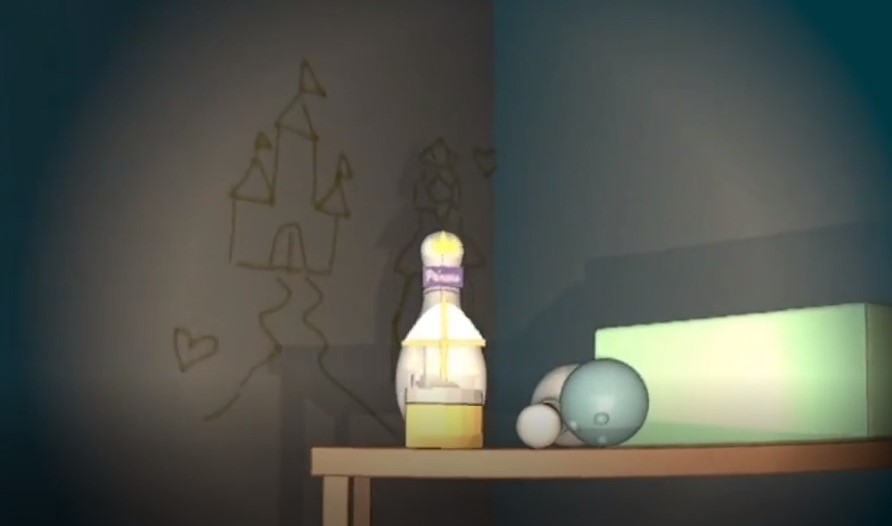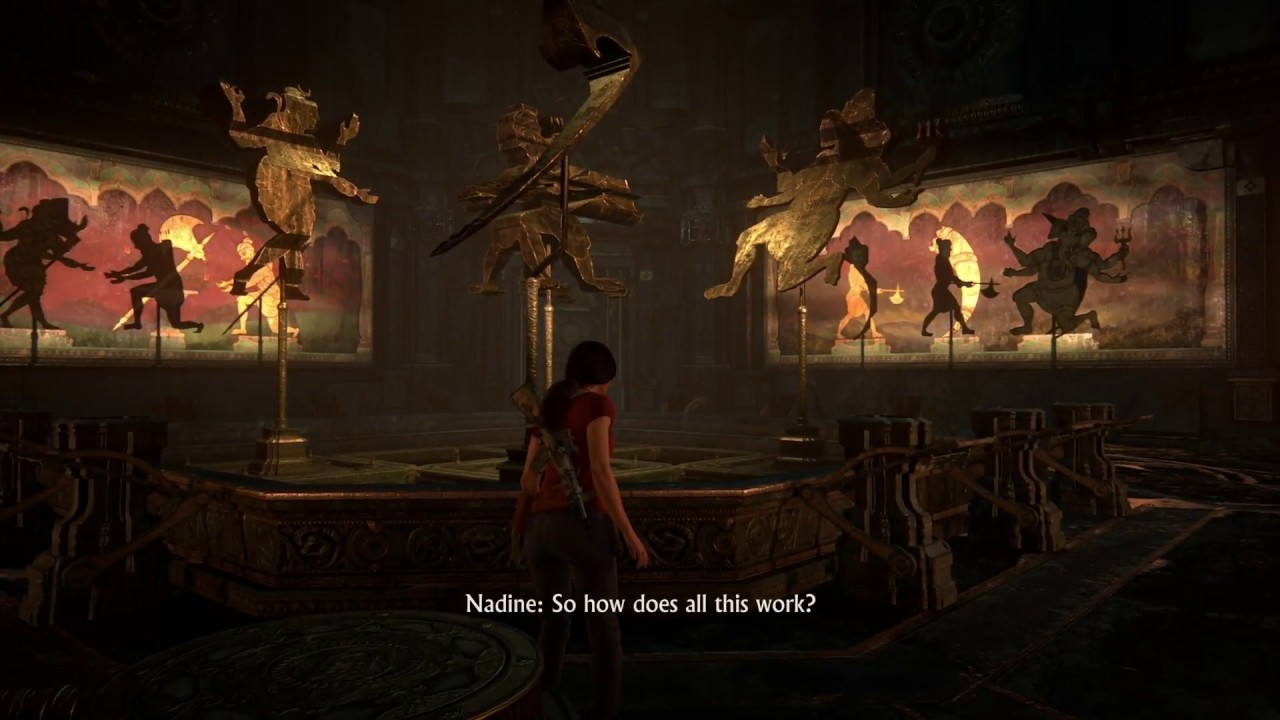Sep 2021
Light Up
Light Up was from the 1st round project of Building Virtual Worlds at ETC, CMU. The prompt required us to let the guest help some character overcome the other object that stops them from achieving their goal. The assigned platform was Oculus Quest 2. As the VR device-end programmer, I focused on the input/output and visual and haptic feedback when the guest interacts. As a game designer, I contributed to the puzzle gameplay of aligning shadows and designed the visual and haptic feedback to guide the player.
Platform & Tools
Unity
Oculus Quest 2
Team Size
2 programmers, 2 artists, 1 sound designer
Duration
2 weeks
My Responsibilities
Designer: interaction design(visual and vibration feedback), gameplay design(align-and-trigger)
Programmer: VR-end and interactions programming
Game Overview
Light Up is a VR game where the guest plays a sister who helps her younger brother overcome the fear of darkness. The guest holds a flashlight to explore the room and tries to cast shadows with meaningful and cute shapes on the wall to delight the brother. When the guest points the light to the objects on the tables within a specific range of positions and angles, the shadows become cute shapes and align with the drawings on the wall, triggering magical and lovely visuals.
Design Process
Theming
We started from the flashlight and shadows. VR controllers are inherently suitable for being flashlights in games because they allow us to interact with objects in the scene within a long distance without touching other items. In contrast, if we hold a long bat in a game, we would expect feedback on the weight, the inertia when swinging, and the force when hitting something. And VR devices can't achieve this feedback, so gameplay with flashlights is better for immersion.
Design Process
Fake Shadows?
Before:
I faked the shadows by setting a visible item with no shadows and placing multiple transparent items that cast shadows. In this way, the artist wouldn't need to arrange the items on the tables precisely. And I was able to generate different shapes of shadows, including the cute correct answer and other scary wrong ones, for a single object when casting in different directions.
AFTER:
The problem with faking shadows was the transitions between shapes were abrupt. We could have applied some algorithms for blending shapes, but we didn't dig into it for the reason of time. We decided to use the actual shadows of the items instead.
Design Process
Player Movement
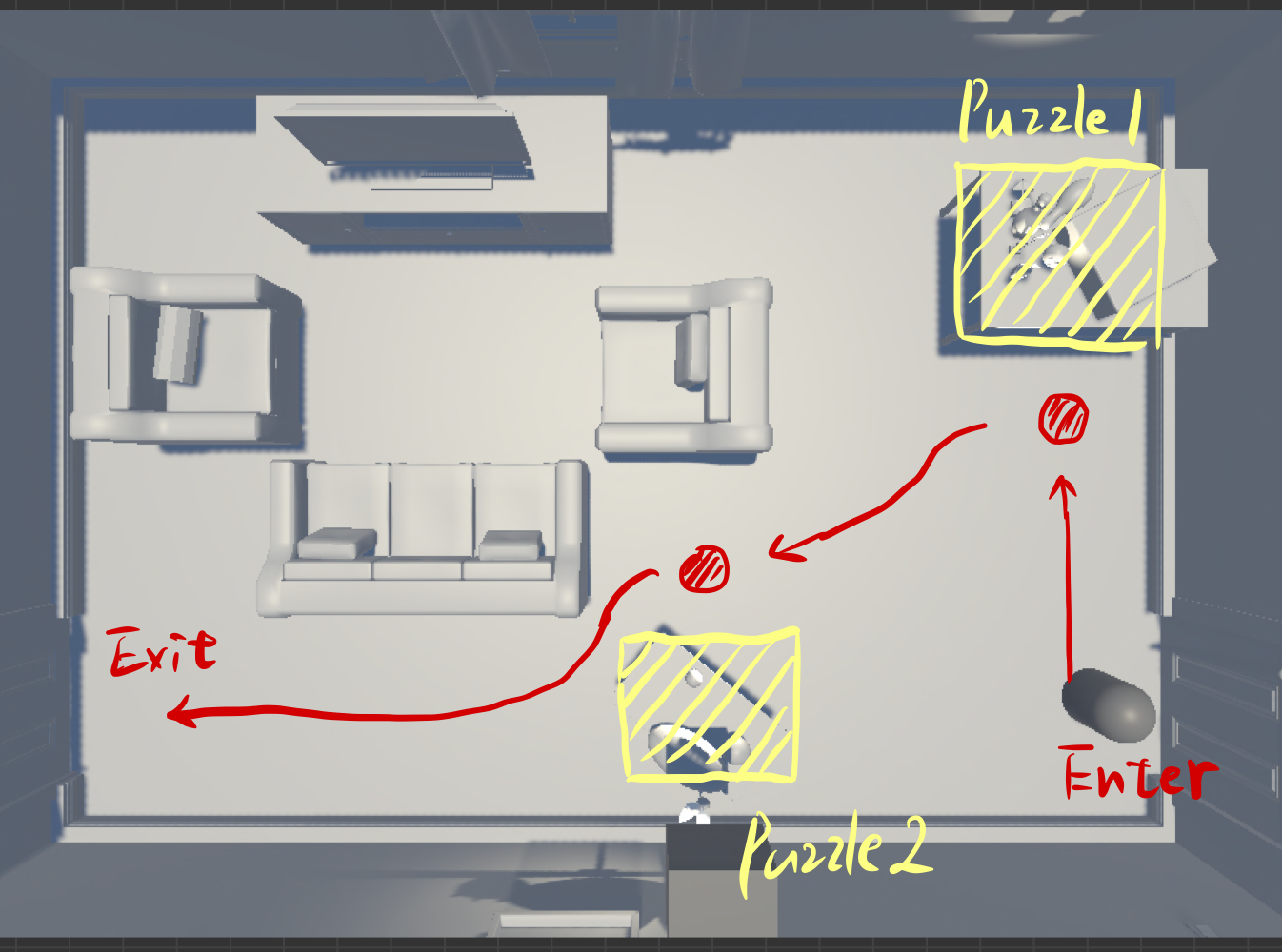
Before
PROBLEM: The guest follows a route, solves the puzzles one by one, and moves forward. But the living room was much bigger than the range where the guest could move physically, which was restricted by the VR's virtual guardian. One solution was to let the guest move around with the joystick, and the other was to teleport the guest puzzle by puzzle. But we weren't satisfied with the immersion of either option.
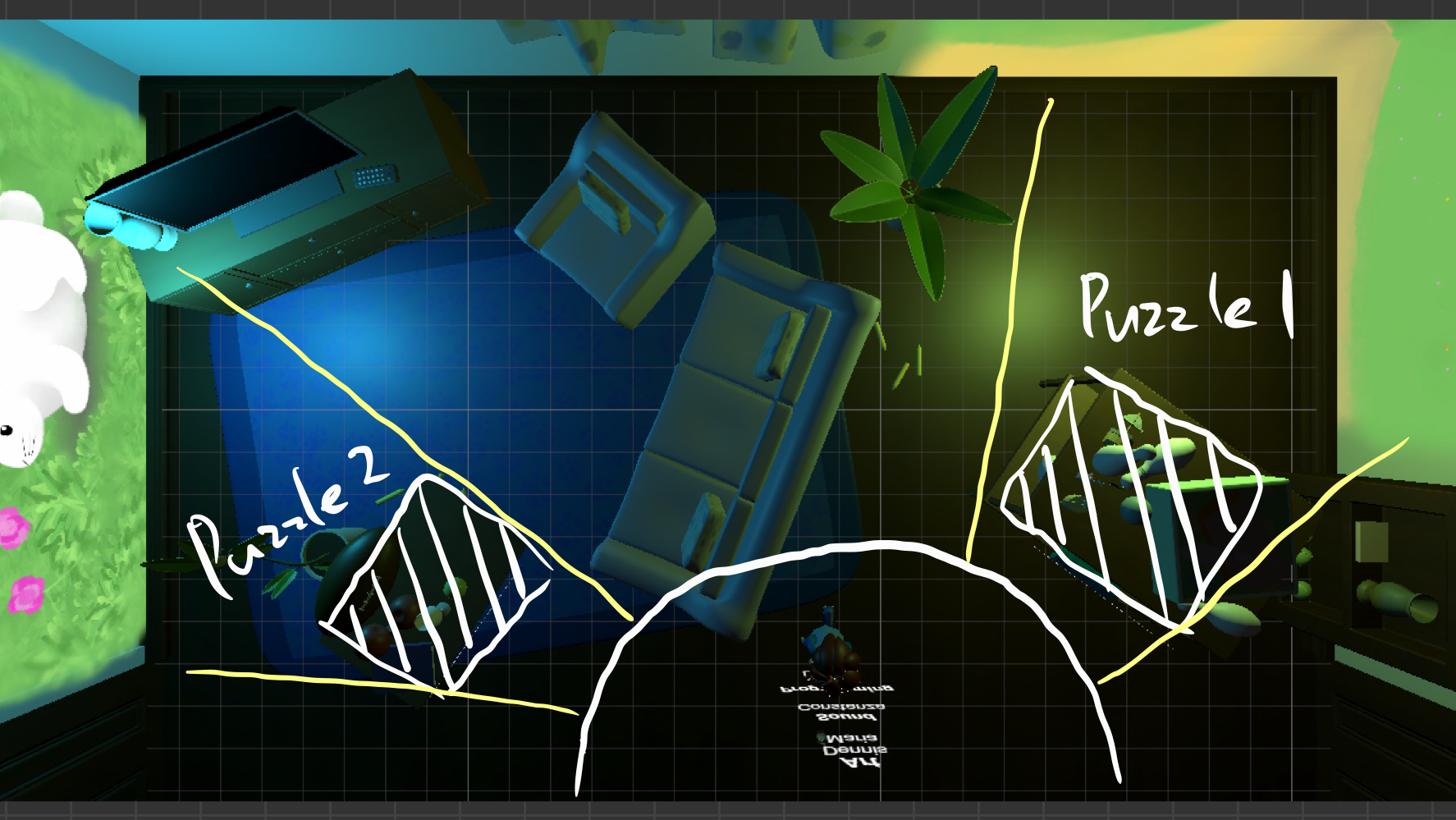
After
The puzzles surround the guest and the brother. The guest helps the brother overcome his fear of darkness instead of leading him through the living room. The guest could solve all the puzzles within a small area regardless of the sequence.
Design Process
Indirect Control
Finding the small spot and angle that triggers the correct shadow was hard for the guest, and simply increasing the volume of the trigger zone would make the game too easy. So, I proposed two approaches to guide the guest to the answers.
Vibration
I added vibration to the controller when the guest get close to the spot. The vibration was programmed to simulate the waveform of a heartbeat (lub-dub), and the frequency and intensity increase when the guest gets closer. The intensity is proportional to the distance to the spot; the period is inversely proportional to the distance to the spot..
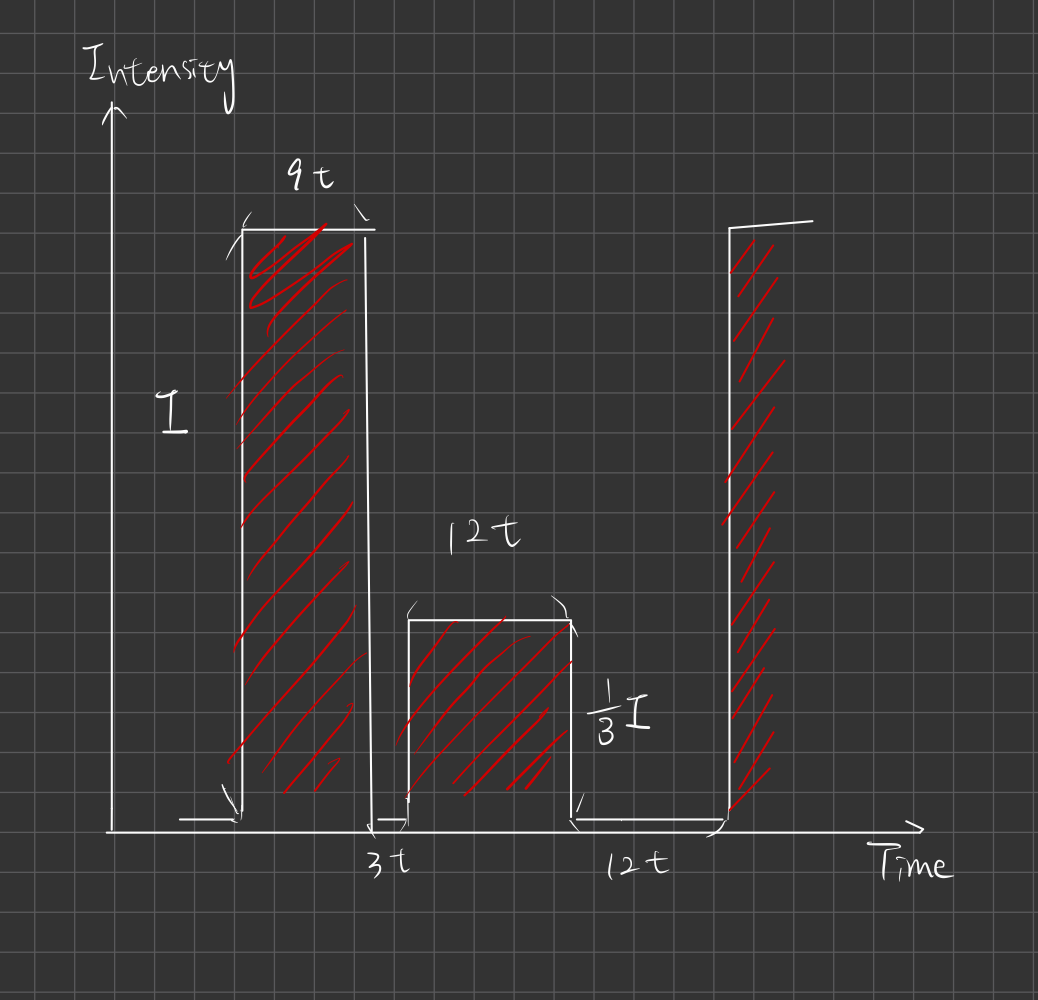
Visuals
Inspired by the classical puzzle gameplay in the Uncharted series, I proposed the idea of placing children's drawings on the wall as alignment guides for the shadows. By aligning the shadows with the drawing, the guest solves the puzzle and triggers the magical visuals. This solution provides visual guidance for the guests to adjust their flashlights, and it also fits the narratives perfectly.
